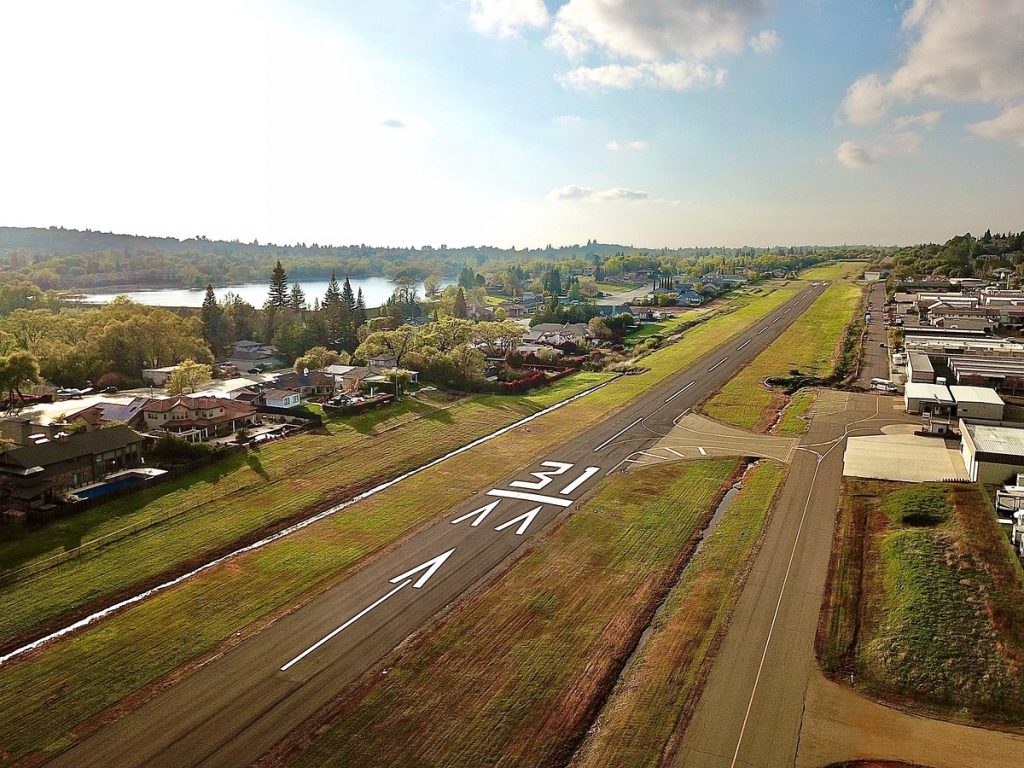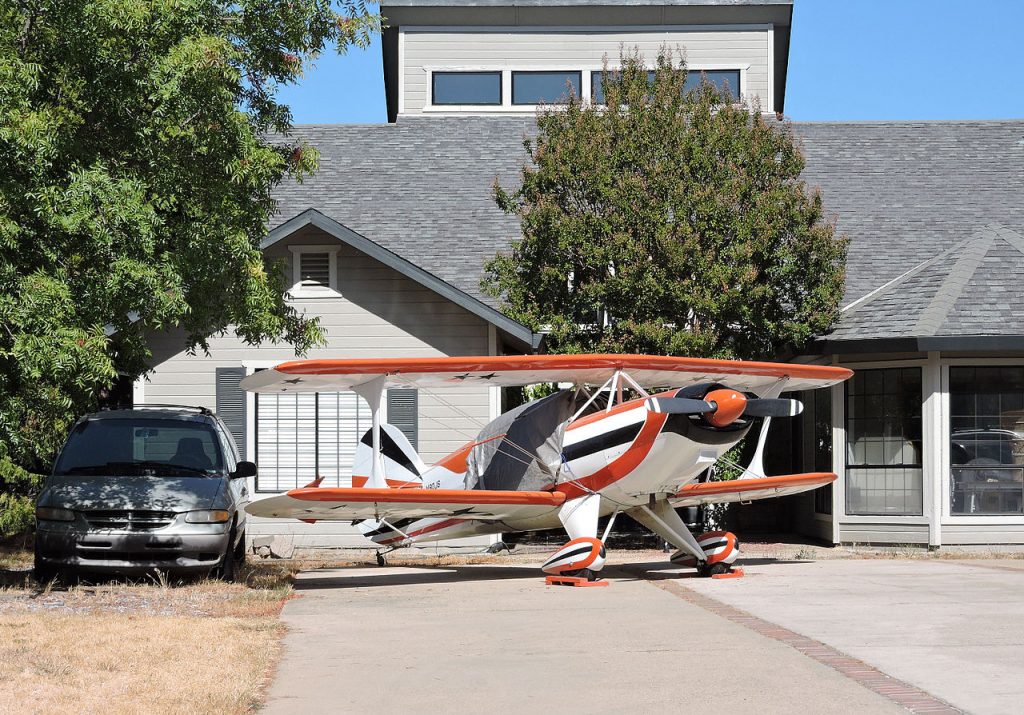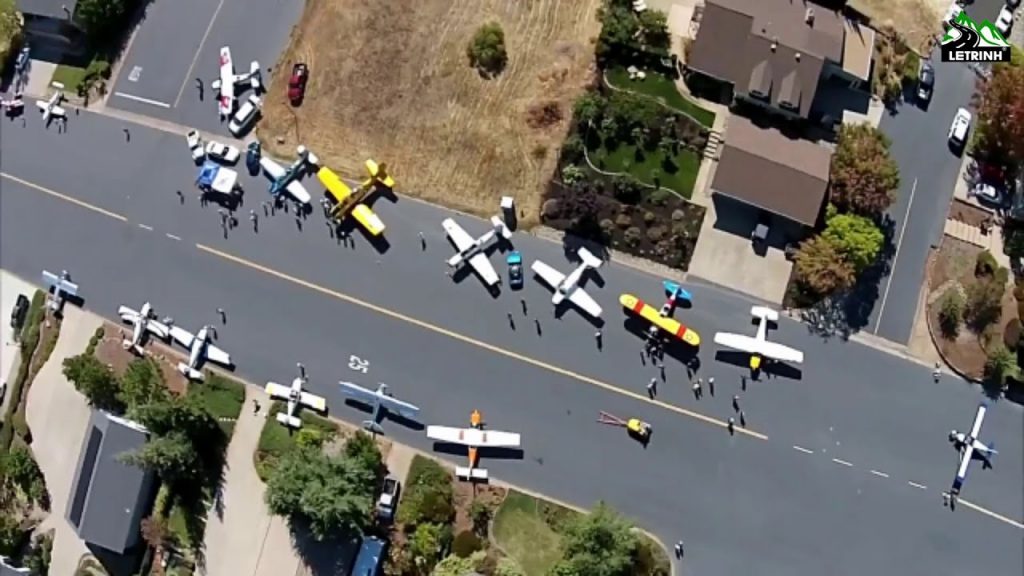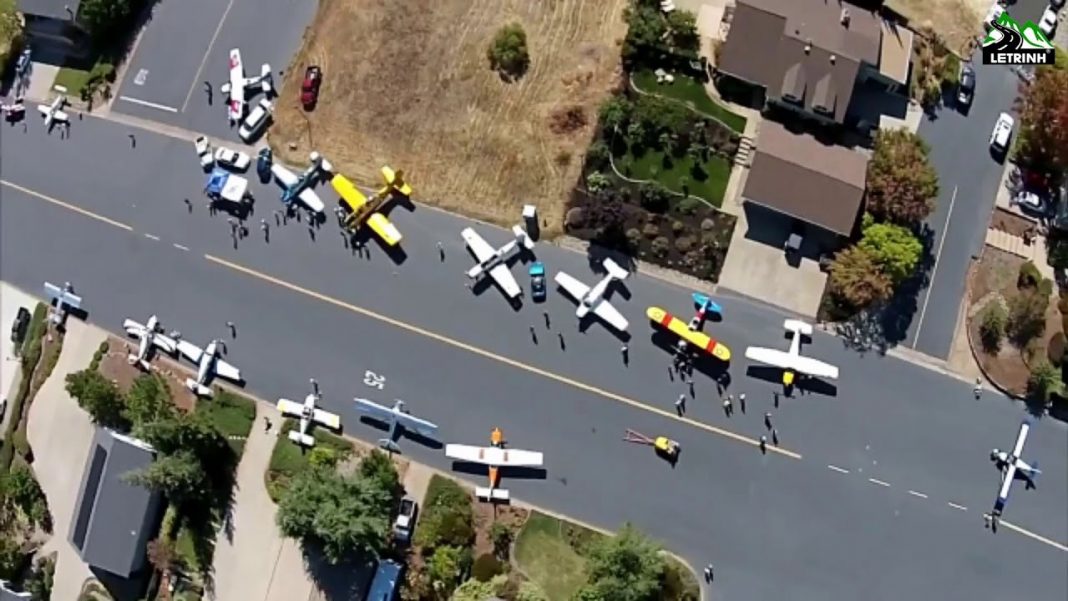One suburb in California took it a step further, creating a fly-in community centered around an airport for pilots and aviation enthusiasts who could store their planes at home.
Cameron Airpark Estates, which is part of Cameron Park and near Sacramento, California, is a residential airpark where homeowners have hangars, and where planes on the streets are as common as cars.
Built in 1963 along with the Cameron Park Airport, the airpark is today home to 124 houses, with around 20 empty lots left.
Roads in the neighborhood are 100 feet wide, designed so that pilots can taxi their planes right from the airport to their doorsteps.

Cameron Park Airport’s manager Kevin Cooksy told Insider that the airpark’s roads are actually wider than the airport’s runway since they’re designed for planes and cars to pass one another safely, whereas the runway should only have aircraft going one way.
Other unique quirks to a neighborhood designed for pilots are that street signs and mailboxes are built extra low, at less than 3 feet, so that they don’t get clipped by planes’ wings, and that street names are all appropriately aviation-themed, from Boeing Road to Cessna Drive.
Hobby pilot Burl Skaggs moved to Cameron Airpark Estates in 2003 from the Bay Area, enticed by lower prices and the huge hangars each home had since he owned a small plane.
For seven years, until his retirement, the mechanical engineer commuted to his job in Palo Alto by plane every morning, saving himself hours he’d otherwise spend in traffic. “Instead of a two-and-a-half or three-hour drive, I had about a 35-, 40-minute airplane ride,” he told Insider. “I don’t commute anymore, but I still have an airplane to play with.”
“Going down to the [regular] airport from here is about an hour, and then you’ve got to wait and go through security, the whole drill. Here, you open up your garage door and you fire up the plane, go down to the runway, and take off,” Daniel Kurywchak, president of Friends of Cameron Park Airport, said.

Of course, the area is also unique in that most residents share an interest in aviation.
“When you go to our social events, it’s hilarious, it’s all these old pilots from World War II to Vietnam to new young airline guys, and I swear every single one of them will stop what they’re doing and have to look at a plane taking off and talk about it,” Kurywchak said.
Julie Clark, a recently retired aerobatic air show aviator and one of the first female commercial airline pilots in the country, has lived in the airpark since 1983.
She recounted getting shingles a few years ago and having neighbors bring by food, check in on her, offer to do errands.
“We’re so close-knit, everybody knows everybody else’s business,” she told Insider, adding that the running joke locally is: “Ask my neighbor what they know about me because they know more about me than I do.”

Not everyone in the airpark has a plane or is an aviation enthusiast, though. A significant amount — Skaggs estimates almost 50% — of residents are car collectors to whom the massive garage-hangars also appeal to. The car owner “infiltration” can sometimes rub the aviation enthusiasts the wrong way because they sometimes complain about plane noise, or don’t want to contribute to maintaining the roads for aircraft.
Cooksy admitted that there’s a minority of people outside of the airpark that complain about air traffic, but said that “the airport makes an effort to play nice with the neighbors,” citing strict noise ordinances and curfews.
According to insider.com















